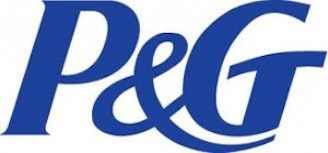
Its current dividend yield is 3% and with a payout ratio of 54%, P&G has the capability of significantly boosting its dividend. The Procter & Gamble Company (NYSE:PG) has averaged an annual dividend increase of 10.8% per year over the last 20 years. However, its dividend increase average has dropped to 8.5% over the last five years and P&G’s most recent dividend increase announced in February was only 7%.
A 7% dividend increase is better than most, but the issue is that the level of P&G’s dividend increase has declined each of the last five years. This downward trend of dividend increases is a red flag indicating that The Procter & Gamble Company (NYSE:PG)’s business model may have some problems and that investors should reevaluate the company to determine if it deserves a spot in their portfolio.
Procter & Gamble is not the only blue-chip company with declining dividend increases. Healthcare giant Johnson & Johnson (NYSE:JNJ) has also lowered its level of dividend increases over the last several years.
Johnson & Johnson (NYSE:JNJ) has increased its annual dividend an average of 12.6% over the last 20 years but over the last five years has only averaged an increase of 8%. Johnson & Johnson (NYSE:JNJ) currently yields 2.9% and will be announcing its next dividend increase within the next month. With a payout ratio of 61%, I am hopeful for an improvement over their last two dividend increases of 7% and 5.5%.
Wal-Mart Stores, Inc. (NYSE:WMT), on the other hand, recently came through with an impressive dividend increase of 16%, which boosted its yield up to 2.4%. Wal-Mart Stores, Inc. (NYSE:WMT)’s annual dividend increases have averaged 18.8% over the last 20 years and 14.7% over the last five years. With a payout ratio of only 31%, Wal-Mart Stores, Inc. (NYSE:WMT)’s dividend excellence should continue well into the future.
Is Procter & Gamble a worthy candidate for your portfolio?
The Procter & Gamble Company (NYSE:PG) is a consumer-products powerhouse with 2012 sales of $83.7 billion. Its very impressive group of brands include 25 blockbusters with annual sales of more than $1 billion. P&G’s earnings have been flat over the past five years, which I suspect is the main reason for its reduced level of dividend increases. The following points illustrate why P&G’s earnings have struggled:
Economic conditions during the great recession were brutal and the recovery has been very slow.
Generic products that compete with P&G’s brands are available at much lower prices.
Although the quality of P&G’s products are much better, some consumers are forced to buy the generic products due to the poor economy.